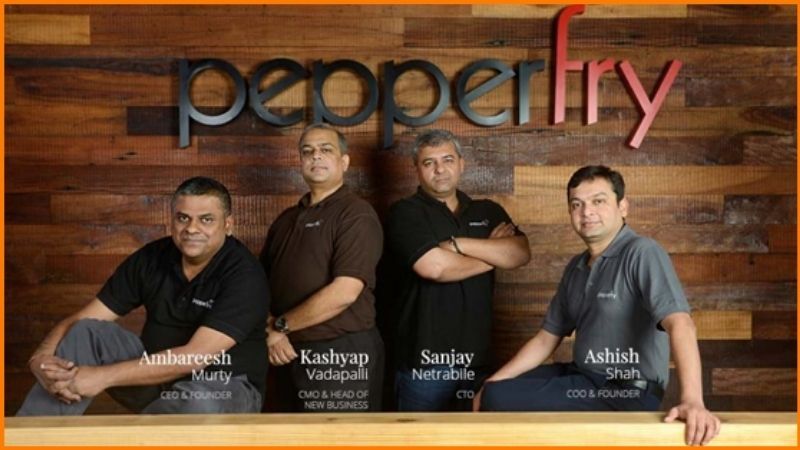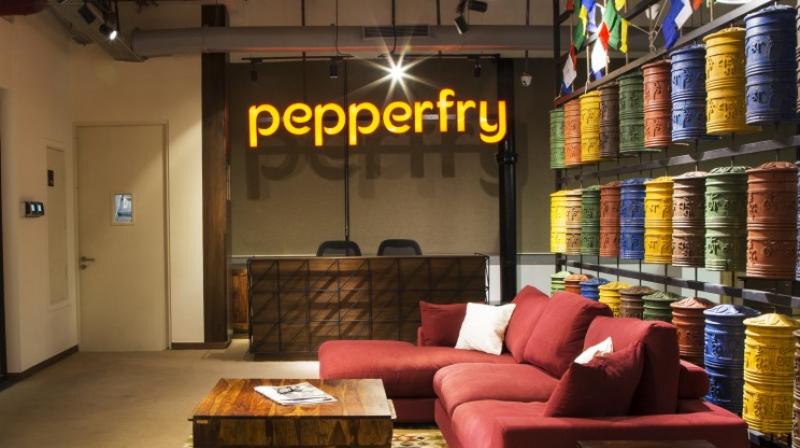Pepperfry has changed the world’s view of furniture shopping. Far from the old days when it was a long and tedious task, Pepperfry has converted it into something much more enjoyable and comfortable task. This innovative idea of an online furniture store came to the founders over just a lunch, when they had no idea how far this would go.
Ambareesh Murty and Ashish Shah are the two founders of Pepperfry. In November 2011, they met at a mutual friend’s office for lunch and quickly understood that they both had a similar idea of addressing a significant problem for the general public. They both thought that furniture shopping should not be as arduous and challenging as it was then and that they could change the public’s view of furniture shopping. Their basic idea was simple; a platform for all your lifestyle needs. Initially, furniture was not the only focus area; the platform had various products like jewelry, fashion, and clothes.
Though confident in their idea and had done all the works for the launch, they had to endure a long 6-month period before any funding came. Though they were too anxious during those months, they were encouraged by the funding of $ 5 million from Norwest. Pepperfry.com was launched in 2012 and, from there, started the constantly growing journey of Pepperfry.
The company has a registered client base of more than 60 lakh and 17 fulfillment hubs across the country. They deliver to more than 500 cities in total and receives an order every 15 seconds. Each month, there are over 120 lakh visitors to the online portal and has around 1.2 lakh products to choose from. The company also has over 40 Pepperfry experience centers (Studio Pepperfry). But this success has not come easy, and there have been many hurdles and innovative strategies to reach this position.
Pepperfry is a well-funded start-up and has gotten around $158 million through five rounds of investments. Top investors consist of Goldman Sachs, Norwest Venture Partners, Bertelsmann Investments, and Zodius Capital. The organization is searching for more funding to improve its products and services and expand in new towns and cities.
Speaking of competition, Pepperfry competes with other online furnishings and lifestyle stores, for example, Urban Ladder, Hometown, Housefull, Durian, and so on. Leading online stores, for example, Flipkart, Amazon, Snapdeal, and Shopclues, have likewise begun offering furniture on the web, which is a new trial for Pepperfry.
The leaders

RoadMap
November 2011 – Series A funding, US $ 5 million (Norwest)
January 2012 – Launched Pepperfry.com
April 2013 – Series B funding, US $ 8 million (Norwest)
May 2014 – Series C funding, US $ 15 million (Norwest, Bertelsmann Investments)
December 2014 – First studio Pepperfry launched at Kanjurmarg, Mumbai
July 2015 – Series D funding, US $ 100 million (Norwest, Bertelsmann Investments, Zodius Capital, Goldman Sachs)
March 2016 – Padgha Warehouse (Largest Furniture Warehouse in The Country)
September 2016 – Series E funding, $ 30 million (Norwest, Bertelsmann Investments, Zodius Capital, Goldman Sachs)
March 2018 – Series E1 funding, $ 31.5 million (State Street Global Advisors)
January 2019 – 6 million customer orders served
Marketing initiative
Happy furniture to you: Pepperfry collaborated with L&K Saatchi & Saatchi to release their first television commercial. The agency created a themed film and two supporting films highlighting their USPs; “Free delivery and assembly” and “100% satisfaction or money back assurance”. These advertisements went a long way in building the brand image in the country. The campaign included radio campaigns, on-ground activation, and also key outdoor promotions across top cities. The company also utilized social media platforms for their campaign.
Marketing Mix
Product: Pepperfry is a company that focuses on fulfilling the need for an online platform to cater to your furniture needs. Initially, they acted as an online portal for the customers to give their orders, and the company additionally provided logistics support. Later on, they included packaging and photography in their services too. Having over 1.2 lakhs products to choose from, statistics show that customers prefer “Coffee table” the most. Their next venture was into the home décor market, by launching the first studio Pepperfry in December 2014.
Pricing: As Pepperfry targets a very unorganized market, discount pricing is not the most optimum strategy for the company. The company prices its goods and services at affordable and competitive prices while also including discounts in specific schemes. The company also uses a referral system and coupon codes on specific products. And lastly, they’ve also collaborated with some credit and debit card companies to provide discounts based on that.
Also Read: Dunzo – Creating A New Market Through New-Age Experiential Marketing
Place: The company has covered more than 500 cities in total and receives an order every 15 seconds. The company has built the Padgha Warehouse, which is the largest furniture warehouse in the country. The western and southern parts of India consist of most of the warehouses of Pepperfry. The company’s main attraction point for the Indian population is the “Studio Pepperfry” experience centers. People are much more excited and interested in buying if they can see the result before making the purchase, and these experience centers are fully furnished and decorated perfectly, merging the local culture of India and the western utilities.
Promotion: The company mostly advertises through TV advertisements, but also invests in print and radio media. Initially, they based their advertisements and campaigns around brand awareness and building trust among the population. After reaching an optimal awareness among the public, they designed their campaigns around specific benefits like the design of the product.
People: The company has over 700 employees, majorly located in Mumbai. While the company did not have an HR department, they later appointed an HR head who reported directly to the founders. The primary skill they look for while recruitment is creativity, as opposed to work ethic. They hire people who are willing to think out of the box and work beyond what their role defines. To ensure that the customers don’t have to wait for more than 6 hours for the setting up part, the company has employed around 300 carpenters. The company has also launched a platform, “Bespoke”, where customers can provide their reviews and opinions on Pepperfry’s services.
Physical evidence: PepperFry sells a few items produced using advances having ISO:9001, 18001, and 14001 certifications, representing the quality of the product. PepperFry had a sale of INR 1000 crore, which records 50% of total furniture sales. The organization is a market pioneer in online furniture deals. PepperFry receives an order every 15 seconds, has more than 5 lakh month to month visit on its page, and has over 5 lakh likes on its Facebook page. By January 2019, it has served 6 million client orders. PepperFry has won various honors like Red Herring Asia Top 100, given to the most promising private technology ventures in Asia, and Pure-Play e-retailer of the year at Indian e-retail congress 2014.
Process: Pepperfry uses stringent quality checks to give quality items to the clients at durable costs. IT is the key to PepperFry’s business as the company invests heavily in building state of the art IT framework. It utilizes data analytics to know about customer inclinations and shopping preferences to give customized services. The organization holds its customers and artisan in high regard, and at present, it has more than 100 artisans who utilize this company to display their art and craftsmanship. Pepperfry launched an innovation hub in Bengaluru in 2016. This is the R&D center with 30-40 engineers accountable for continually improving Pepperfry’s products to fulfill customers’ satisfaction.
To read more content like this, subscribe to our newsletter.
[wpforms id=”320″]
